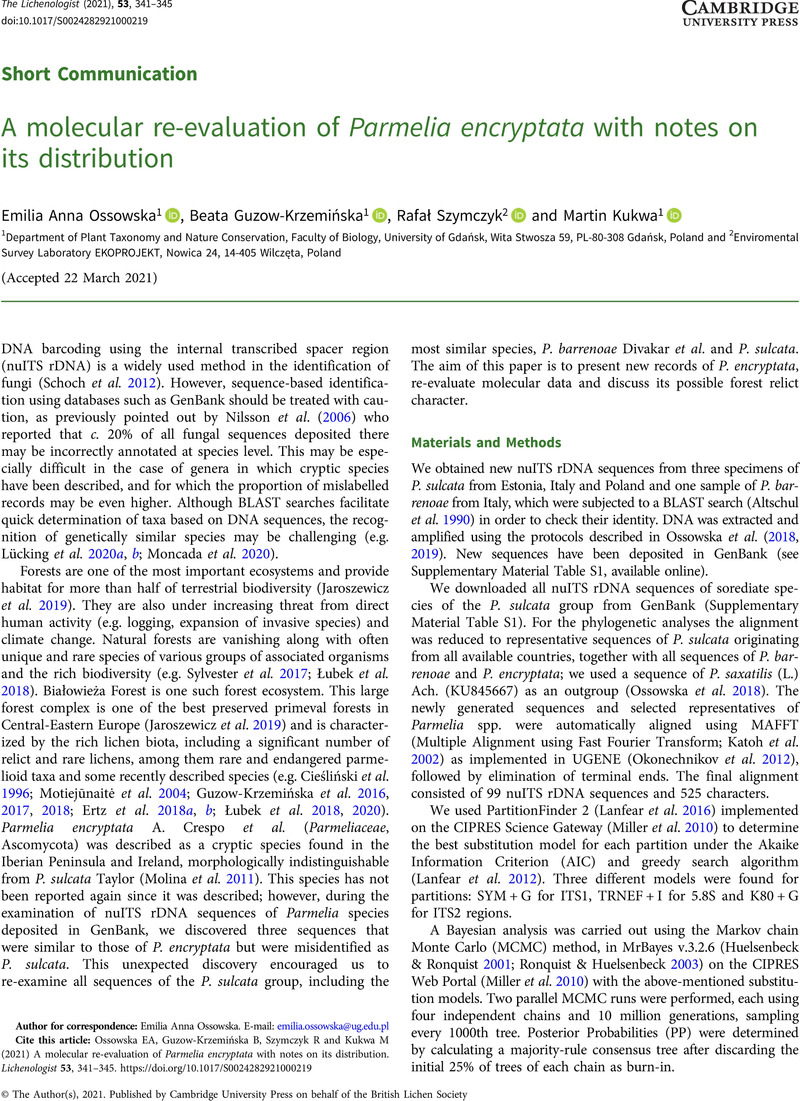Crossref Citations
This article has been cited by the following publications. This list is generated based on data provided by Crossref.
Ossowska, Emilia Anna
Schiefelbein, Ulf
Szymczyk, Rafał
and
Kukwa, Martin
2023.
Contribution to the knowledge of the distribution of <i>Parmelia</i> species (Parmeliaceae, Ascomycota) – New records confirmed by molecular data.
Acta Mycologica,
Vol. 58,
Issue. ,
p.
1.
Ossowska, Emilia Anna
Guzow-Krzemińska, Beata
Kukwa, Martin
Malíček, Jiří
Schiefelbein, Ulf
Thell, Arne
and
Kosecka, Magdalena
2024.
The application of haplotypes instead of species-level ranks modifies the interpretation of ecological preferences in lichen symbiont interactions in Parmelia.
Scientific Reports,
Vol. 14,
Issue. 1,
Szczepańska, Katarzyna
Kukwa, Martin
and
Ossowska, Emilia Anna
2024.
<i>Aspicilia fluviatilis</i> and <i>Circinaria leprosescens</i>, two lichen species of the family Megasporaceae new to Poland.
Acta Mycologica,
Vol. 59,
Issue. ,
p.
1.




